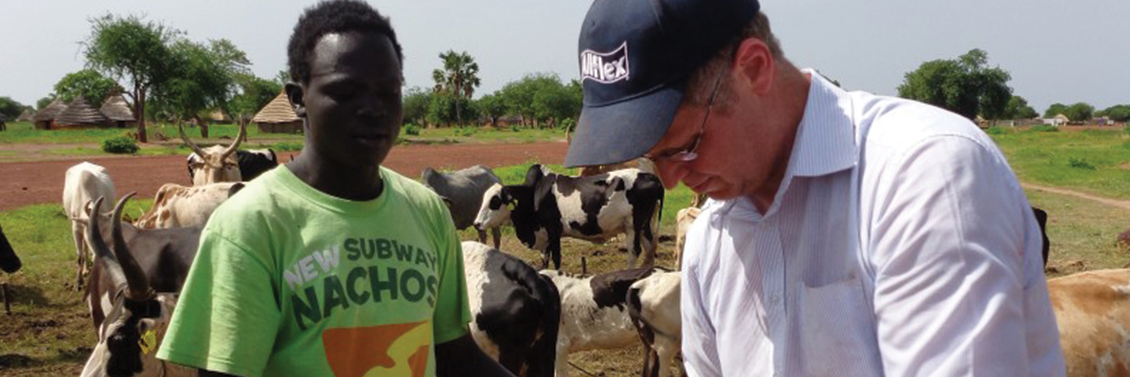South Sudan Cattle Program
South Sudan
Overview
The two-year, $2 million South Sudan Cattle Program (SSCP) (2012-2014), funded by the U.S. Department of State, sought to mitigate local conflicts through the development of a cattle identification and livestock ownership and registration system to reduce both cattle theft and trade of stolen cattle. With over 12 million cattle in South Sudan, the livestock industry is an important source of rural livelihoods and plays a central role in defining social status. Cattle theft is a common occurrence, and stolen animals are a source of meat, milk, and dowry.
Approach
- Conducted Research on Conflicts: CNFA conducted on-the-ground research to identify the best practices to reduce cattle theft and inter-clan conflicts with a specific focus on the development of an improved identification method and a cattle ownership registration program.
- Conducted Research on Tagging Methods: A 2012 assessment identified non-radio frequency identification tags as the cheapest, easiest, and most reliable method of identification, where cattle were uniquely numbered and entered into a cloud-based registry designed specifically for SSCP.
- Designed and Piloted Tailored Traceability System: Through a consultative process and an intensive assessment and design phase, CNFA designed a traceability system tailored to the realities of South Sudan, providing the greatest opportunities for sustainable expansion and implementation at a national level. The Program then launched a pilot identification and registration system that enabled the individual cattle to be traced for life. Coupled with the identification system, SSCP activities supported the development of a computerized cattle ownership registration center.
- Partnered with Key Stakeholders: Another important factor was the ongoing coordination between the government of South Sudan, especially the Ministry of Animal Resources and Fisheries (MARF) and Community Animal Health Worker (CAHW) volunteers. Under the two-year pilot project, CNFA worked closely with the MARF to identify and catalog the ownership of over 25,000 livestock, training large teams of CAHWs who carried out the work of tagging and capturing the data for animals and owners.
The overall goal of the Program was to tag 150,000 cattle with non-radio frequency ear tags. Unfortunately, SSCP was suspended in April 2014 and formally closed by the Department of State in September of the same year due to escalating safety issues as a result of the violence that began in December 2013.
As of last tagging count, 23,232 cattle were tagged and entered into the SSCP database. Over 460 community mobilization meetings were held, helping to inform over 7,220 people about the Livestock Identification and Traceability System. Many initially-skeptical community members in the targeted regions saw stolen animals returned to their rightful owners, helping spread the concept of adopting cattle-tagging practices. Thus far, over 700 community members have tagged their cattle. The ultimate goal of the project was to reduce cattle theft by 25% and preliminary results indicate over a 60% reduction in cattle theft.
Impact
- 95% reduction in cattle theft of identified cattle
- 23,232 cattle identified and registered


